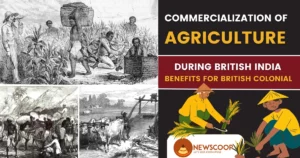What is Baigram Copper Plate Inscription?
The Baigram Copper Plate Inscription is an important historical document that sheds light on the political and social conditions of Bengal during the medieval period. It is a copper plate grant that was issued by the Chandra dynasty in the 10th century CE, and it contains a record of land grants and privileges given to a group of Brahmins. This article will provide a detailed account of the Baigram Copper Plate Inscription, including its history, significance, and contents.
History and Background of the Baigram Copper Plate Inscription
The Baigram Copper Plate Inscription was discovered in the village of Baigram in the Birbhum district of West Bengal in 1961. It is believed to date back to the 10th century CE, during the reign of the Chandra dynasty, which ruled Bengal from the 9th to the 11th century CE. The Chandra dynasty was known for its patronage of Buddhism and Hinduism, and it played a significant role in the cultural and religious history of Bengal.
The Baigram Copper Plate Inscription was issued by King Mahendrapala of the Chandra dynasty, and it contains a record of land grants and privileges given to a group of Brahmins. The document is written in Sanskrit, which was the language of administration and literature in medieval Bengal.
The copper plate grant was a common form of royal documentation in India during the medieval period, and it was used to record land grants, tax exemptions, and other privileges.
Contents of the Baigram Copper Plate Inscription
The Baigram Copper Plate Inscription is divided into several sections, each of which provides important information about the land grants and privileges given to the Brahmins. The following are the main sections of the document:
- Opening Invocation: The document begins with an invocation to Lord Shiva, who was one of the primary deities worshiped by the Chandras.
- Identification of the Donor: The second section identifies King Mahendrapala as the donor of the land grants and privileges.
- Identification of the Recipients: The third section identifies the Brahmins who were the recipients of the land grants and privileges. They are described as learned scholars who were proficient in the Vedas and the rituals of the Brahminical religion.
- Description of the Land Grants: The fourth section provides a detailed description of the land grants given to the Brahmins. The grants included agricultural land, pasture land, and forests.
- Description of the Privileges: The fifth section describes the privileges given to the Brahmins. These included tax exemptions, the right to collect revenue from their lands, and immunity from prosecution in court.
- Closing Invocation: The document ends with another invocation to Lord Shiva, along with a statement that the copper plate grant was written in the year 962 CE.
Significance of the Baigram Copper Plate Inscription
The Baigram Copper Plate Inscription is a significant historical artifact for several reasons. First, it provides important information about the political and social conditions of Bengal during the medieval period. The document sheds light on the role of the Chandra dynasty in promoting Brahminical religion and the patronage given to learned scholars. It also provides insights into the economic and agricultural conditions of Bengal during the 10th century CE.
Second, the Baigram Copper Plate Inscription is a valuable source of information about the use of copper plate grants in medieval India. The document provides an example of how land grants and privileges were recorded and administered during the period. It also highlights the importance of written documentation in the administration of medieval Indian kingdoms.
Third, the Baigram Copper Plate Inscription is an important source for the study of the Sanskrit language and literature. The document provides a valuable example of medieval Sanskrit literary styles and conventions, and it is a testament to the importance of Sanskrit in medieval Indian culture.
Conclusion
The Baigram Copper Plate Inscription is a valuable historical artifact that provides important information about the political, social, and cultural conditions of medieval Bengal. The document sheds light on the role of the Chandra dynasty in promoting Brahminical religion and the patronage given to learned scholars.
It is also an important source for the study of medieval Indian administration and the use of copper plate grants in recording land grants and privileges. The Baigram Copper Plate Inscription is a testament to the rich cultural heritage of Bengal and the importance of written documentation in the administration of medieval Indian kingdoms.
Thank You!
Some other important Inscriptions:





